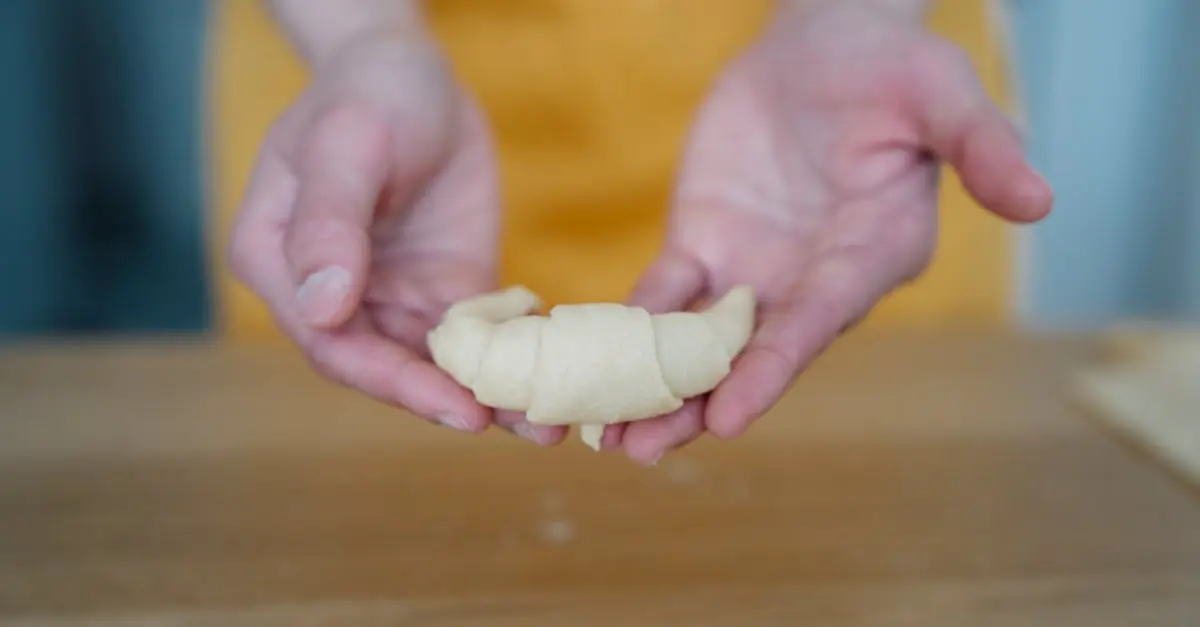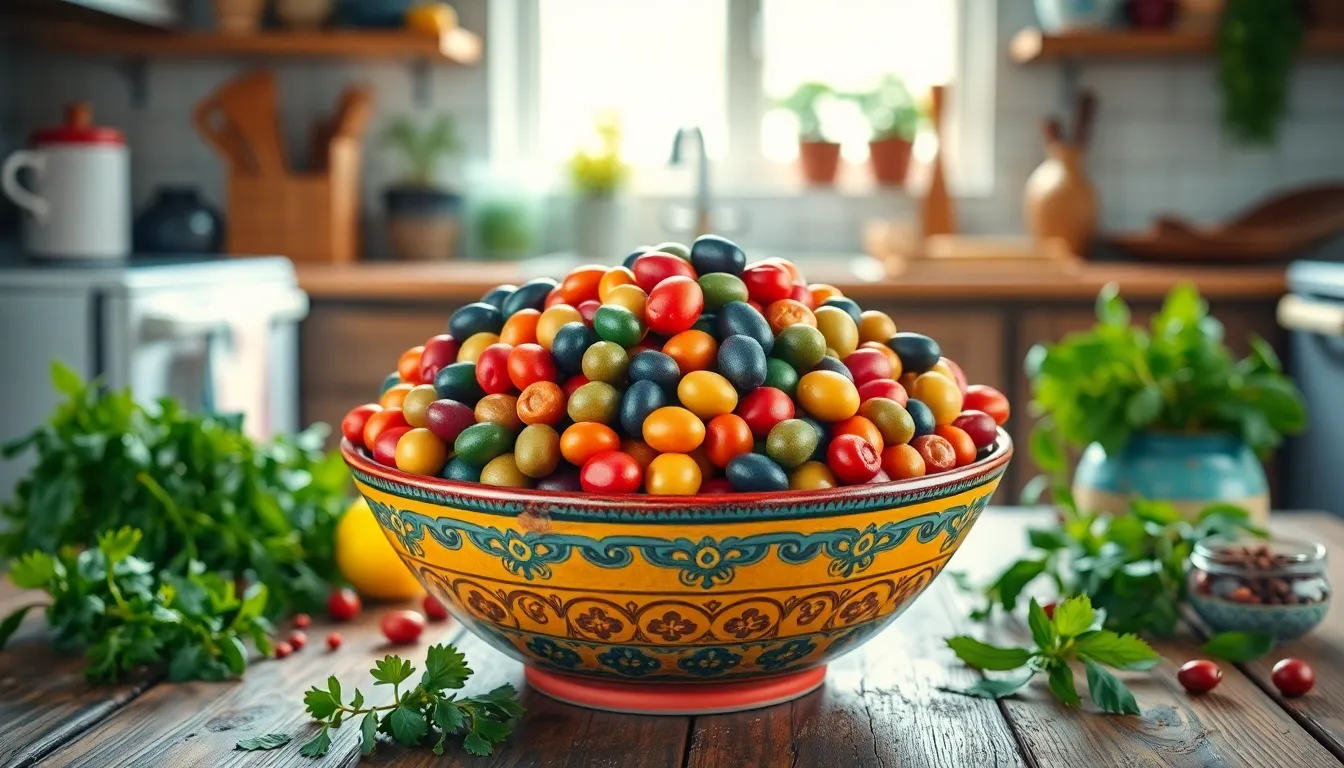French cooking techniques are the secret sauce behind some of the world’s most beloved dishes. From the delicate art of soufflé to the robust flavors of coq au vin, mastering these methods can elevate any kitchen experience. Whether it’s sautéing, poaching, or flambéing, these techniques offer a culinary adventure that’ll make even the most timid home cook feel like a Michelin-star chef.
Table of Contents
ToggleOverview of French Cooking Techniques
French cooking techniques play a crucial role in creating beloved dishes recognized worldwide. Understanding these techniques enhances culinary skills and boosts confidence in the kitchen.
Soufflé involves a delicate process where beaten egg whites create a light, airy texture. Creating this classic dish requires precision and an understanding of the perfect folding technique. Coq au vin showcases the art of braising, allowing flavors to meld over low heat. It exemplifies how slow cooking can transform simple ingredients into something extraordinary.
Sautéing represents a fundamental cooking method that uses high heat to quickly cook ingredients in a small amount of fat. This technique maintains the vibrant colors and flavors of vegetables and proteins. Poaching serves as another gentle cooking technique, ideal for delicate items like eggs or fish. Cooking in simmering liquid ensures both tenderness and moisture.
Flambéing stands out for its dramatic presentation and flavor enhancement. This technique involves igniting alcohol in a dish, creating a visually stunning effect while adding depth to the dish’s taste profile. Mastery of these techniques creates a strong foundation for aspiring chefs.
Embracing French cooking techniques allows for creativity and exploration in the kitchen. Each method contributes to the unique character of French cuisine, inviting cooks to experiment and innovate with flavors and presentations. As a result, both novice and experienced cooks can elevate their culinary repertoire.
Classic Techniques
French cooking techniques enhance the culinary experience. Mastering these methods empowers home cooks to elevate their dishes.
Sautéing
Sautéing involves cooking ingredients quickly over high heat. This technique develops vibrant colors and intense flavors in vegetables and proteins. Chefs often use a small amount of fat, like olive oil or butter, to prevent sticking. Heat control plays a critical role here; too high, and foods might burn. Ingredients should be prepped uniformly to ensure even cooking. For instance, diced onions and bell peppers can create a delicious base for a variety of recipes. Engaging the senses, sautéing releases aromas that tempt the palate.
Poaching
Poaching gently cooks food in simmering liquid. This method preserves delicate textures, making it perfect for eggs and fish. The liquid, often flavored with herbs and spices, imparts subtle tastes. Optimal temperature is vital; a gentle simmer prevents toughening proteins. A classic example is poached salmon with a light dill sauce. Serving poached fruit in syrup creates a refreshing dessert option. This technique offers a health-conscious alternative, utilizing minimal fat while maximizing flavor.
Braising
Braising combines methods of both dry and wet cooking. The process begins with searing meat at high temperatures, sealing in juices. Subsequently, the ingredients simmer slowly in a flavorful liquid. This technique transforms tough cuts into tender, succulent dishes over time. Coq au vin is a traditional example, showcasing the depth of flavor achieved through patience. Vegetables absorb the rich sauce, enhancing their taste. Braising creates hearty meals that nourish the body and soul, making it a staple in French cuisine.
Modern Techniques
Modern French cooking techniques highlight innovation while maintaining culinary traditions. Techniques such as sous vide and molecular gastronomy revolutionize the cooking landscape.
Sous Vide
Sous vide involves sealing food in vacuum bags and cooking it in a water bath at controlled temperatures. This method ensures precise cooking, preserving both moisture and flavor. It enhances texture and tenderness, making it ideal for meat, fish, and vegetables. Chefs often utilize sous vide to achieve consistent results, allowing them to replicate perfect dishes every time. Popular examples include tender duck breast and perfectly cooked asparagus.
Molecular Gastronomy
Molecular gastronomy combines science and culinary art to create unique dining experiences. Techniques within this approach include spherification and emulsification, transforming traditional dishes into innovative presentations. Spherification allows liquids to form spheres that burst in the mouth, while emulsification creates stable mixtures of oil and water. Chefs use molecular techniques to elevate flavors and textures, offering diners unexpected surprises. Signature dishes often feature foams, gels, and unexpected flavor combinations that intrigue the palate.
Specialty Techniques
French cuisine showcases distinct specialty techniques that exemplify culinary artistry. Two notable areas include pâtisserie and charcuterie, which highlight the precision and craftsmanship involved in French cooking.
Pâtisserie
Pâtisserie refers to the art of crafting pastries and desserts. It encompasses techniques like laminating dough for croissants, producing flaky layers through repetitive folding and rolling. Mastering the preparation of choux pastry forms the basis for items like éclairs and cream puffs. Techniques also involve tempering chocolate to achieve a glossy finish and stable texture. Creating delicate tarts requires practice in blind baking, ensuring the crust retains its shape while providing a perfect base for fillings such as fruit or cream. The finesse in balancing flavors and textures defines this specialty, making pâtisserie a celebrated aspect of French culinary tradition.
Charcuterie
Charcuterie centers on the preparation of cured meats and sausages. This technique emphasizes preservation methods, including smoking and curing, which enrich flavors. Processes like seasoning meats with herbs and spices enhance the final products, such as pâtés and rillettes. Creating a charcuterie board involves a thoughtful selection of meats, cheeses, and accompaniments, showcasing visual appeal and taste. Fermentation plays a vital role in developing unique flavors as well. Attention to detail in slicing and arrangement enhances presentation, making charcuterie a staple in French dining culture and a favorite among culinary enthusiasts.
Regional Variations
French cuisine showcases diverse regional variations that reflect local ingredients and traditions. Each area contributes unique techniques that enhance the richness of French cooking.
Techniques from Provence
Provence is known for its vibrant cuisine characterized by fresh, aromatic ingredients. Techniques include the use of olive oil, which serves as a primary cooking fat, enhancing flavor profiles in dishes like ratatouille. The art of confit exemplifies preservation methods, particularly for garlic and tomatoes. Incorporating herbs de Provence adds complexity, creating depth in seasonal dishes. Grilling is also popular due to the region’s sunny climate, allowing the preparation of succulent meats and seafood outdoors.
Techniques from Burgundy
Burgundy boasts techniques that focus on robust flavors and hearty dishes. Slow cooking remains a hallmark, particularly in coq au vin, where chicken simmers in red wine, infusing a rich taste. En papillote, a technique that involves cooking food in parchment paper, helps to lock in moisture and flavors, making it ideal for preparing fish. Additionally, the region emphasizes the use of mustard, particularly in sauces, adding a distinct zing. Mastering these techniques allows the celebration of Burgundy’s culinary heritage while showcasing its exceptional local produce.
French cooking techniques offer a gateway to culinary excellence. By mastering these methods home cooks can elevate their dishes and embrace the artistry of cooking. Whether it’s the delicate precision of a soufflé or the bold flavors of coq au vin each technique brings its own unique charm to the table.
The blend of traditional and modern approaches encourages creativity and innovation in the kitchen. As cooks explore regional variations and specialty techniques they not only enhance their skills but also deepen their appreciation for the rich heritage of French cuisine. Embracing these methods empowers anyone to create memorable meals that celebrate the essence of French cooking.




